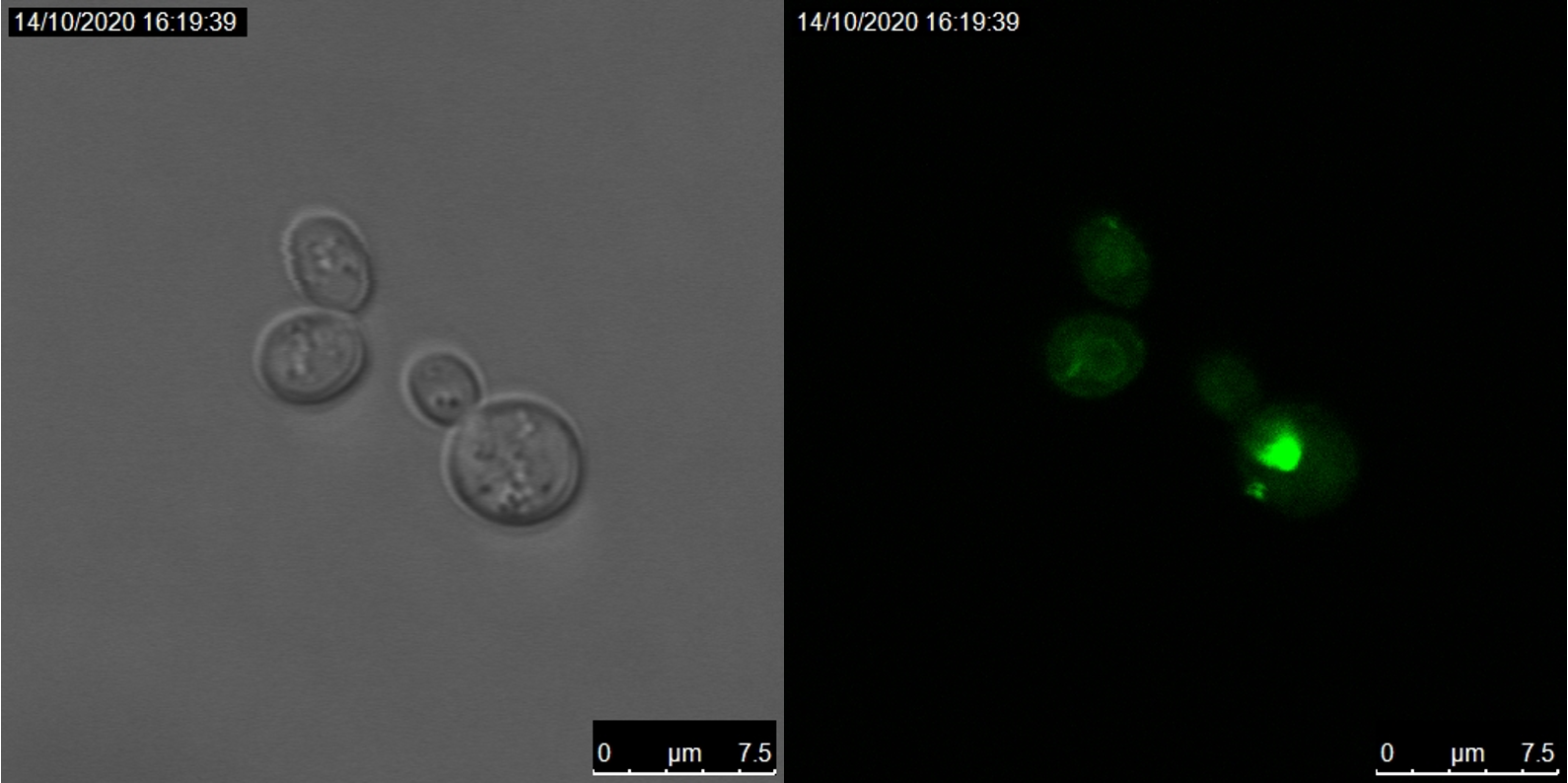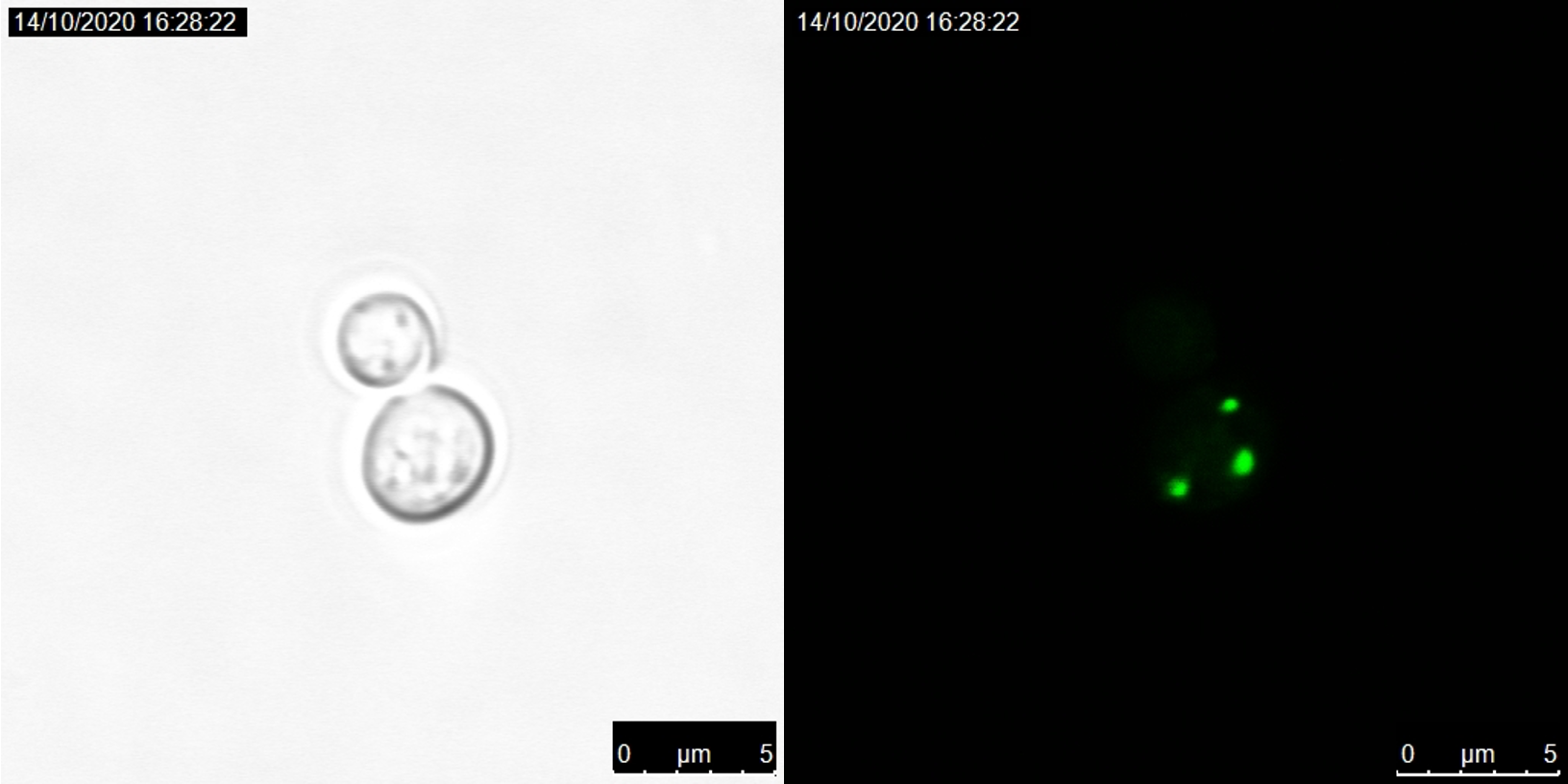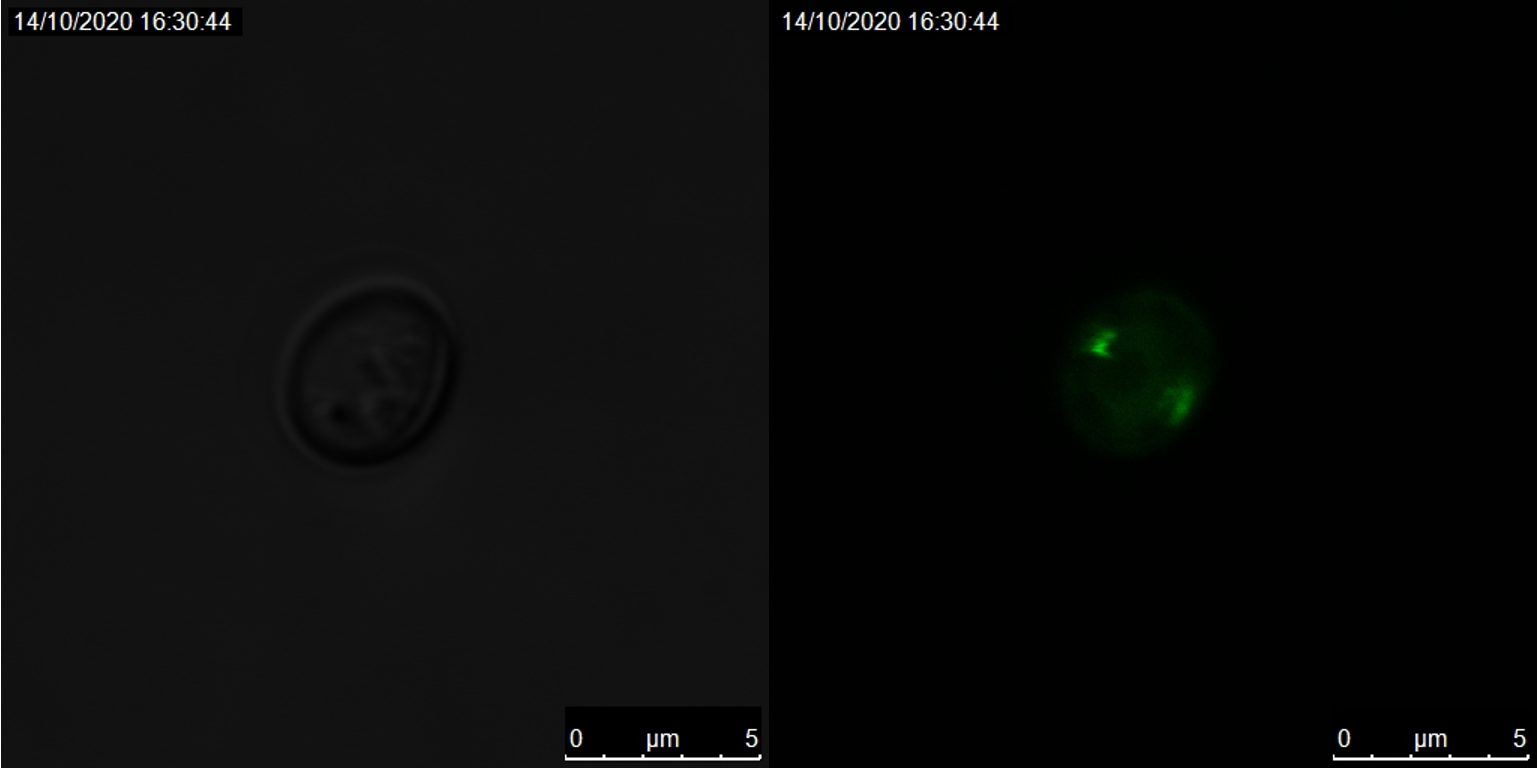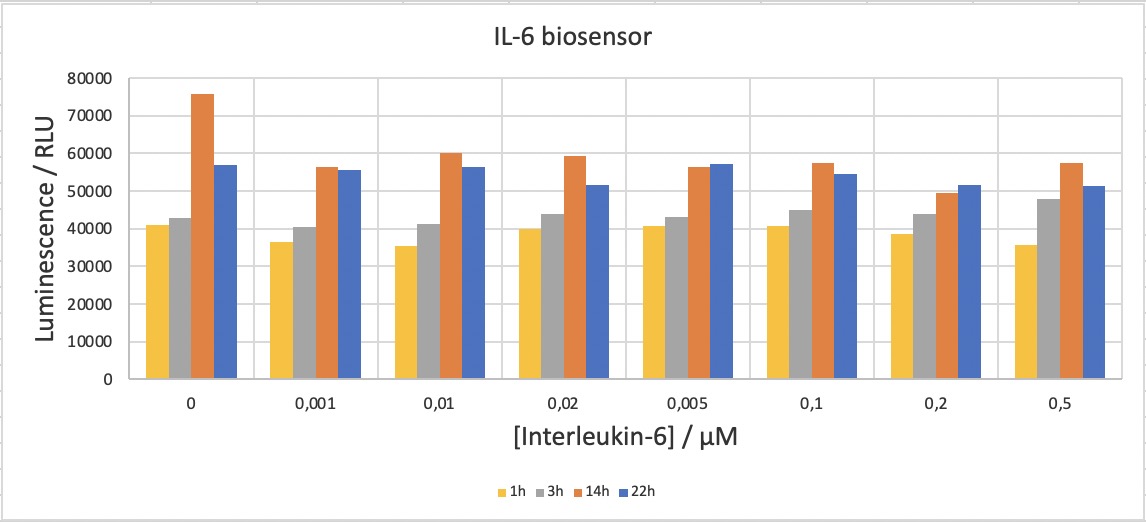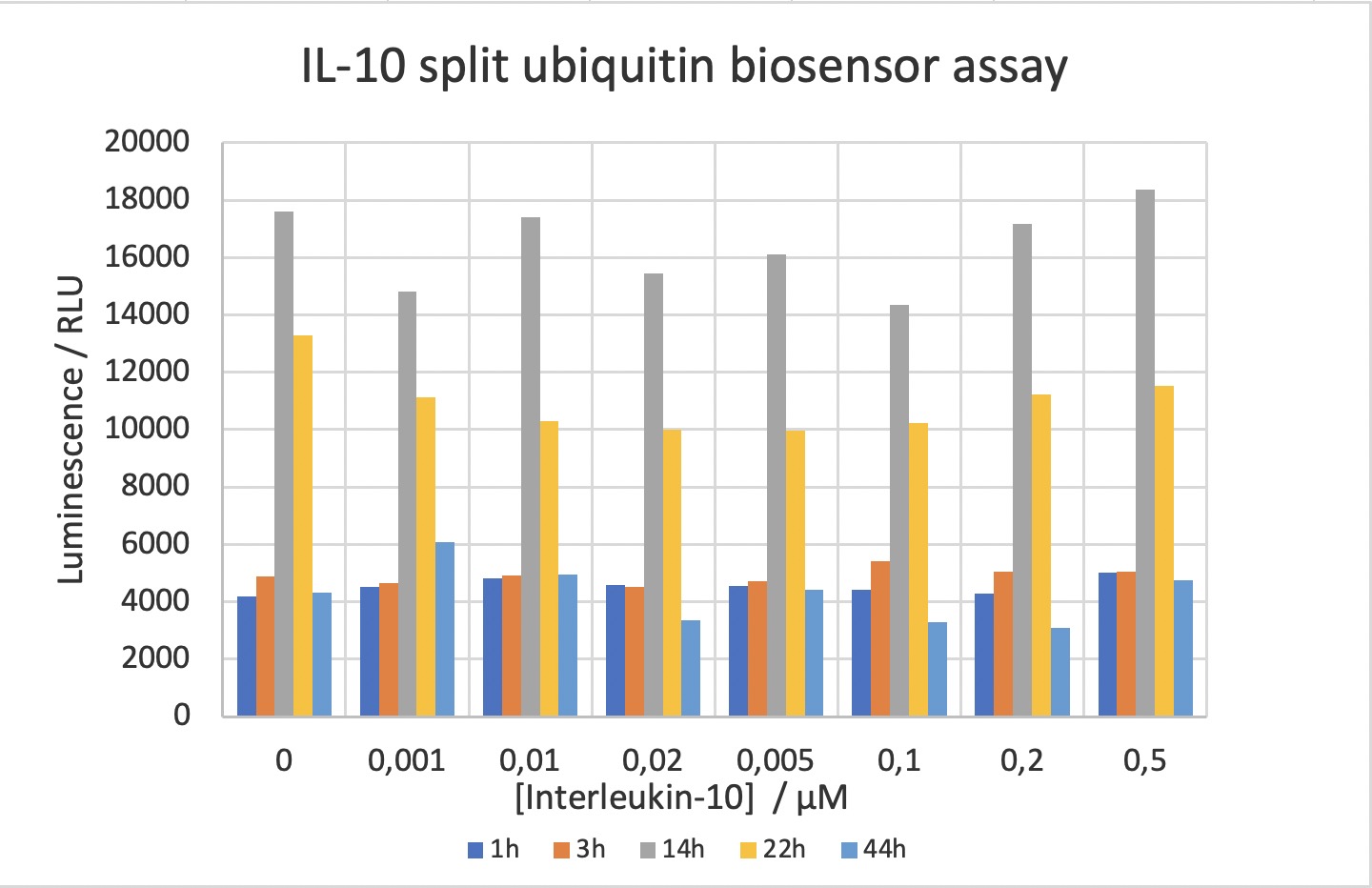Difference between revisions of "Part:BBa K3617000"
| Line 21: | Line 21: | ||
The signal peptide and transmembrane domain constitute the backbone of the modular framework of the UCopenhagen 2020 team (CIDosis). These are used for localizing receptor proteins for interleukin-1, interleukin-6 and interleukin-10 at the plasma membrane of <i>S. cerevisiae</i> as type I single pass transmembrane proteins. As a type I transmembrane protein, the soluble interleukin receptor domains localizes extracellularly while the N-terminal part of the split protein is intracellular. Ivanusic et al. (citation) introduced the use of the signal peptide and transmembrane domain in a split-ubiquitin system for screening for protein-protein interactions at the plasma membrane in <i>S. cerevisiae.</i> | The signal peptide and transmembrane domain constitute the backbone of the modular framework of the UCopenhagen 2020 team (CIDosis). These are used for localizing receptor proteins for interleukin-1, interleukin-6 and interleukin-10 at the plasma membrane of <i>S. cerevisiae</i> as type I single pass transmembrane proteins. As a type I transmembrane protein, the soluble interleukin receptor domains localizes extracellularly while the N-terminal part of the split protein is intracellular. Ivanusic et al. (citation) introduced the use of the signal peptide and transmembrane domain in a split-ubiquitin system for screening for protein-protein interactions at the plasma membrane in <i>S. cerevisiae.</i> | ||
| − | [[Image:T--UCopenhagen--parts-il6rnubflour.jpg|500px|thumb|<p align="justify"> '''figure 2: Both the biobrick and <bbpart>BBa | + | [[Image:T--UCopenhagen--parts-il6rnubflour.jpg|500px|thumb|<p align="justify"> '''figure 2: Both the biobrick and <bbpart>BBa K3617001</bbpart>locates to the plasmamembrane. When the receptors trimerize with IL-6 extracellularly, ubiquitin is complemented and then transcription factor in <bbpart>BBa K3617001</bbpart> is released and triggers expression of the reporter gene.'''</p>]] |
The two fibronectin type III soluble interleukin-6 receptor subunit alpha domains mediates the binding of the receptor to interleukin-6, as demonstrated on figure 1. The outer Ig-like domain of the receptor mediates other functions of the receptor.[[#References|[2]]] | The two fibronectin type III soluble interleukin-6 receptor subunit alpha domains mediates the binding of the receptor to interleukin-6, as demonstrated on figure 1. The outer Ig-like domain of the receptor mediates other functions of the receptor.[[#References|[2]]] | ||
Revision as of 14:51, 25 October 2020
sIL-6R-Nub
This biobrick is a part of a 2-protein system that is designed for detection of human interleukin-6 and transduction of the signal by means of a reconstituted ubiquitin. It is mainly comprised of the extracellular part of the human soluble interleukin-6 receptor and of the N-terminal part of split ubiquitin. Development of split-ubiquitin as a tool for study of protein-protein interactions in vivo, was first published in 1994 and has been an essential feature in biologists’ toolbox ever since [1]. A specific mutation in the N-terminal part protects it from binding spontaneously to the C-terminal part, however, reassociation can be facilitated by binding of a pair of proteins to which the split-ubiquitin parts are fused. Human interleukin-6 receptor was expressed in yeast for the first time in 1996 and further improvements paved the way to our own chimeric transmembrane proteins [2].
Sequence and Features
- 10COMPATIBLE WITH RFC[10]
- 12COMPATIBLE WITH RFC[12]
- 21INCOMPATIBLE WITH RFC[21]Illegal BglII site found at 130
Illegal BglII site found at 502
Illegal XhoI site found at 456 - 23COMPATIBLE WITH RFC[23]
- 25COMPATIBLE WITH RFC[25]
- 1000COMPATIBLE WITH RFC[1000]
This biobrick consists of multiple parts; An endoplasmic reticulum import signal peptide from the Saccharomyces cerevisiae cell wall integrity and stress response component 1 (Wsc1) receptor in S. cerevisiae , the second and third domain of human soluble interleukin-6 receptor subunit alpha (sIL-6R), the transmembrane receptor of Wsc1 and the N-terminal part of the split version of ubiquitin, constituting the first 34 amino acids of ubiquitin. The domain possesses the Ile13Gly mutation which inhibits the spontaneous association of the two split protein halves by reducing their affinity to each other. Between the sIL-6R domains and the transmembrane domain, a flexible 2XXGGGGS linker [3] exists. Between the transmembrane domain and the N-terminal split ubiquitin domain two basic amino acids (KR) have been added together with the 2XGGGGS linker.
Sequence optimization
The sequence was codon optimized for S. cerevisiae. The recognition sequences for SpeI, XbaI, NotI, EcoRI, PstI were avoided to follow the RFC10 standard.
Structure and function
This part is designed to function as a human IL-6 receptor together with BBaK3617001. Compared to the human IL-6 receptor, only two out of three extracellular domains are included, and the intracellular domains are replaced with the N-terminal part of split-ubiquitin. The signal peptide and transmembrane domain constitute the backbone of the modular framework of the UCopenhagen 2020 team (CIDosis). These are used for localizing receptor proteins for interleukin-1, interleukin-6 and interleukin-10 at the plasma membrane of S. cerevisiae as type I single pass transmembrane proteins. As a type I transmembrane protein, the soluble interleukin receptor domains localizes extracellularly while the N-terminal part of the split protein is intracellular. Ivanusic et al. (citation) introduced the use of the signal peptide and transmembrane domain in a split-ubiquitin system for screening for protein-protein interactions at the plasma membrane in S. cerevisiae.
The two fibronectin type III soluble interleukin-6 receptor subunit alpha domains mediates the binding of the receptor to interleukin-6, as demonstrated on figure 1. The outer Ig-like domain of the receptor mediates other functions of the receptor.[2]
This biobrick is intended to work together with BBaK3617001 and constitute a functional human IL-6 receptor. BBaK3617001 possesses outer three domains of the IL-6 co-receptor soluble glycoprotein 130 (sgp130), extracellularly and the C-terminal part of split ubiquitin intracellularly with a synthetic transcription factor linked to the C-terminal of the split ubiquitin domain. The synthetic transcription factor is a fusion of a DNA binding domain of the LexA transcription facter from Escherichia Coli and an activation domain from the herpes simplex virus transcriptional regulatory protein VP16. LexA-VP16 is often used in yeast 2 hybrid assays as it is not endogenous to S. cerevisiae, thus providing orthogonality. After translocation into the nucleus, LexA-VP16 binds to a synthetic promoter which possesses repeats of the lexAop region from E. coli and a corepromoter from the eno1 promoter endogenous to S. cerevisiae. The biobrick and BBaK3617001 localize to the same subcellular compartment and will be dissociated in the absence of interleukin-6. In the presence of interleukin-6, the extracellular domains of the two parts; IL-6R and sgp130 associate into a heterotrimer consisting of IL-6, IL-6R and sgp130. The trimerization then causes intracellular complementation of the ubiquitin that is recognized by an endogenous deubiquitinizing enzyme which releases the transcription factor to the cytosol. The transcription factor the relocates to the nucleus and activates expression of a reporter gene.
Confocal flourescence microscopy
In order to investigate the localization of our protein, superfolding green flourescent protein was linked to the C-terminal of the protein product of the biobrick. Consequently, the cells were observed with confocal flourescence microscopy for visualization.
The majority of investigated cells had either multiple or a single big fluorescent aggregate. This aggregate was positioned between the nucleus and the plasma membrane and can likely be attributed to the presence of inclusion bodies. It is possible that the protein may be stuck in the golgi apparatus, which is especially evident for the cells that had only one accumulation near their nucleus, in accordance to previous findings of Vollmer et al. (year) that have shown that removing the N-terminal Ig-like domain of the IL-6 receptor leads to retention of the protein in the secretory pathway. To circumvent this localization issue, one could add back the N-terminal Ig-domain of the IL6-R.
Biosensor assays
To test the functionality of the part, it was stably transformed into chromosome x site 3 of S. cerevisiae and constitutively expressed by the pTDH3 promoter together with BBa_K3617001. The latter was under constitutive expression by the pPCCW12 promoter. Together, they were also expressed with a NanoBit luciferase, which luminesces 100 times brighter than firefly or Renilla luciferase. The luciferase expression was controlled by binding of lexA-VP16 to the lexo promoter. After growing the cell cultures to an OD600=0,5, the cells were incubated at 30°C with different concentrations of commercial heterologously expressed IL-6 for 1, 3, 14 and 22 hours. A luminescence assay was performed to analyze the expression of luciferase after application of an industrial extraction reagent called YeastBuster to the samples, which allows for fast extraction of native proteins from yeast without mechanical disruption and enzymatic lysis, mixed with NanoBiT substrate.
No correlation between IL-6 concentration and luminescence intensity was observed at any incubation time. This indicates, that the biosensor does not work as intended for the concentrations and experimental conditions of the experiment. A similar assay was performed with the IL-10 biosensor strain also developed by the UCopenhagen 2020 team (link to biobricks). Compared with the IL-10 biosensor, the amount of luminescence was between 3-10 times higher at all concentrations and incubation times.
This suggests that the two extracellular domains have an affinity to each other even without the presence of IL-6. This further implies that the proteins produced from BBa_K3617000 and BBa_K3617001 are localized at the same subcellular compartment(s). The high amount of luminescence may also be caused by partial degradation of BBa_K3617001 may also be partially degraded, after which the synthetic transcription factor, lexA-VP16, is released and re-localizes to the nucleus. This could be verified by integrating only the BBa_K3617001 and reporter gene into S. cerevisiae and performing an additional luciferase assay. Alternatively, one may perform a western blot with primary antibody against GFP on the strain used for the localization assays.
References
[1] Johnsson, N., & Varshavsky, A. (1994). Split ubiquitin as a sensor of protein interactions in vivo. Proceedings of the National Academy of Sciences of the United States of America, 91(22), 10340–10344. https://doi.org/10.1073/pnas.91.22.10340 https://www.pnas.org/content/pnas/91/22/10340.full.pdf
[2] Vollmer, P., Oppmann, B., Voltz, N., Fischer, M., & Rose-John, S. (n.d.). 438±446 (1999) q FEBS 1999. In Eur. J. Biochem (Vol. 263). https://www.sciencedirect.com/science/article/abs/pii/S0022175996001639
[3] Chen, X., Zaro, J. L., & Shen, W. C. (2013). Fusion protein linkers: Property, design and functionality. In Advanced Drug Delivery Reviews (Vol. 65, Issue 10, pp. 1357–1369). https://doi.org/10.1016/j.addr.2012.09.039


